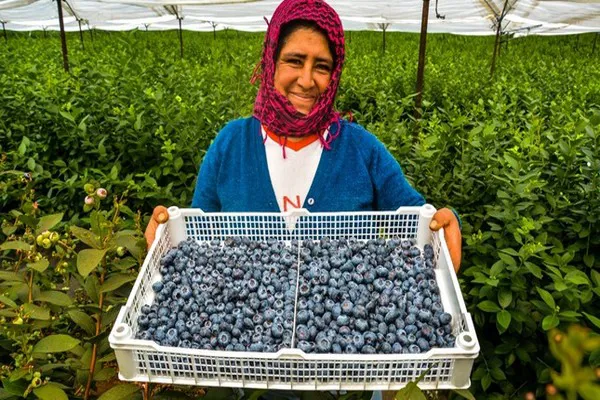Peruvian blueberries popularly known as “blue gold” have gained new market access to Israel. This follows an official communication from Israel's Plant Protection and Inspection Service (PPIS), with Peru’s Ministry of Agrarian Development and Irrigation (MIDAGRI) announcing the opening of a new Asian market for Peruvian blueberries.

The National Agricultural Health Service of Peru SENASA, as a strategic arm of MIDAGRI, was responsible for specifying this access to Israel. This latest market for the Peruvian "blue gold" allows it to be marketed in 62 international markets.
“The management of access to new markets is essential to continue generating opportunities and ensure that our products are consolidated worldwide. These actions go hand in hand with field work, which is focused on giving phytosanitary support, ensuring the health and safety of our agricultural products. With the opening of this new Asian market, it is expected to exceed the 222,714 tons exported during the last campaign,” said the head of SENASA, Miguel Quevedo.
The phytosanitary requirements established for the export of blueberries to Israel contemplate the cold treatment for the fruit fly pest and the phytosanitary inspection prior to shipment.
The Peruvian “blue gold”
The agro-export growth of blueberries has positioned Peru as the world’s top exporter of this fruit. It has reached exports of 222,714 tons, with an extension of 17,707 hectares during the 2021-2022 campaign. These figures represent a growth of 37% in export volumes and 30% in cultivation areas, compared to the 2020-2021 campaign according to SENASA.
The contributions of the regions to the export of this fruit are: La Libertad (49%), Lambayeque (22%), Lima (20%), Ica (8%), Ancash (7%) and Piura (5%). In the 2021-2022 campaign, the main export destinations were: USA (55%), the Netherlands (23%), China (12%), the United Kingdom (5%) and other countries received the remaining 5% of the total certified export volume.
“Access to new Asian markets generates great expectations for the sector, considering that these countries are characterized by their higher demand," concluded Quevedo.
For more information:
Miguel Quevedo
SENASA
Tel: +51 (01) 313 3300
Email: mesadepartes@senasa.gob.pe
www.gob.pe/senasa
